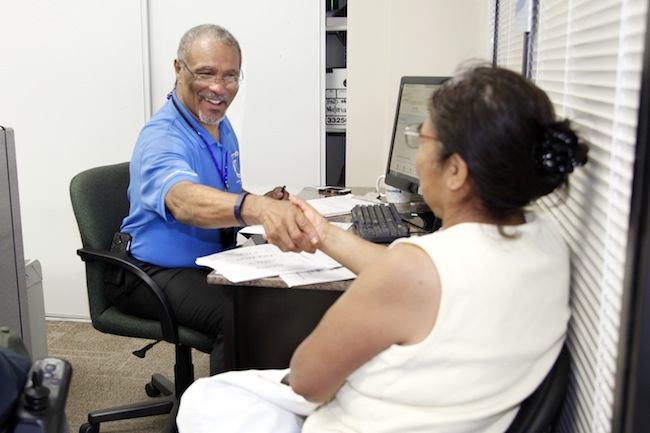
When Obamacare’s second open enrollment period started in November, leaders of Covered California (the state’s insurance marketplace) got on the road, spreading the word about health insurance options campaign-style: on a bus tour. With less time to sign up uninsured Californians—the deadline for new enrollees is February 15, 2015—the pressure is on to build on the remarkable success of the first enrollment period.
There are also new challenges afoot. Organizers will have to go deeper into communities and convince more people who don’t use computers, many whose first language isn’t English, as well as those who were unconvinced by the first round of messaging about subsidized health insurance.
In advance of the Zócalo/The California Wellness Foundation event “How Can Obamacare Reach More People in the Inland Empire?”, we asked health policy experts, community organizers, and patient advocates to tell us about strategies that have worked to get uninsured Californians to buy healthcare coverage.
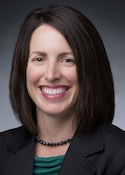
California has been enormously successful in signing up consumers for coverage through its state exchange, Covered California. Covered California’s marketing campaign, coupled with outreach and enrollment by community-based organizations, helped cut the number of uninsured in half.
One important decision Covered California made was to fund trusted organizations to help with outreach and enrollment. As a result, consumers learned from sources in their communities about affordable health insurance. In fact, a majority of people who enrolled in health insurance were contacted by an organization doing outreach (69 percent), and a majority of newly insured Californians said someone helped them sign up (61 percent through Covered California and 60 percent through Medi-Cal).
Recognizing the importance of in-person assistance, California has continued to keep people on the ground to help consumers apply for coverage. This open enrollment period, there are more than 28,000 trained experts statewide helping people apply for the first time or reenroll in their coverage. If Californians want to turn to a local trained expert, they can go to http://www.coveredca.com/get-help/local/ and find someone who can help them apply for coverage.
Future success will be tied to California’s ability to reach consumers who are less comfortable with technology and who may confront language or literacy barriers to enrolling in coverage. Nearly 44 percent of Californians do not speak English as their first language. Ongoing outreach at the local level will ensure that the 3.4 million recently enrolled Californians keep their new health insurance. To reach the remaining uninsured, more application assistance will be needed to help people apply, renew, and understand their health insurance. California will need to continue dedicating funds to outreach and in-person enrollment assistance to make sure that Californians get insured and stay insured.
Jessica Kendall is the director of the Enrollment Assister Network at Families USA. She works at the national, state, and local level to identify best practices in enrollment related activities.
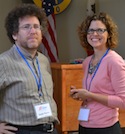
The nonprofit we work for in California, Enroll America, has focused on collecting and analyzing data to understand and meet uninsured consumers’ specific needs for information and assistance. As a result, we have employed the following strategies to get coverage to the uninsured:
Give consumers the information they need, spin-free. Many consumers get their information about the ACA from the local news, but they have found that news coverage is often about politics rather than practical concerns. Filling that information gap with nonpartisan, practical information is crucial. Many of the remaining uninsured do not know how to find free in-person assistance, nor are they aware that financial help is available to make premiums affordable.
Create strong relationships with and among trusted messengers. Consumers need information from sources they already know and trust. Faith leaders, librarians, schools, clinics, and labor unions have had great success engaging consumers in the enrollment conversation. We provide toolkits, scripts and support for these messengers to help spread the word about coverage, and we connect partners who have mastered only one piece of the healthcare puzzle with complementary partners to build stronger collaborations.
Build a program around multiple contacts. Most consumers need to be contacted 5 or 6 times—either in person, via email, or by phone—before they are ready to enroll. Intensive follow-up is necessary and must be planned.
Provide personalized, in-person assistance. Consumers are much more motivated by cost calculators and other personalized tools that help them understand the level of financial help available to their families than by general statements about low-cost plans. They also prefer local, in-person assistance from someone who speaks their language and understands (or shares) their cultural background to guide them through the enrollment process.
The majority of the Californians who remain uninsured have been uninsured for at least three years or have never been insured; most of them are Latino; most of them are men. Successful outreach and enrollment programs will be designed with those demographics and the strategies above in mind.
Nicole Oehmke and Andy Perry lead Enroll America’s California Project, supporting more than 90 community-based organizations funded by the California Endowment to find and enroll hard-to-reach and underserved consumers by providing access to data, best practices and training. For more information about our work in California, please contact Nicole at noehmke@enrollamerica.org or (916) 215-2413. To learn about the national Get Covered America campaign, visit www.getcoveredamerica.org.
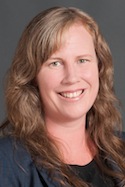
As the second open enrollment period under the Affordable Care Act gets started, Covered California (the state’s new insurance marketplace) is seeking to increase enrollment by about 500,000 people and expand its reach to under-represented groups and regions.
One key factor will be ensuring people have access to the necessary information and assistance to complete the enrollment process. According to a Kaiser Family Foundation survey, more than 60 percent of formerly uninsured Californians who bought insurance through Covered California reported having assistance with the enrollment process, whether from a family member or friend, a representative from Covered California, or other available assistance. And among those who remained uninsured but tried to enroll during the first enrollment period, the majority indicated they had difficulty finding the information they needed to sign up for coverage.
Any successful strategy will require community-level engagement and coordination to conduct outreach and enrollment activities. In particular, the availability of in-person and phone assistance to answer questions and provide ongoing support to guide people through the process will be essential. Fortunately, many of these things are underway. Covered California has extended its service center hours and also opened storefront locations to provide a place people can go to have their questions answered. And community-based organizations across the state continue to play an important role in connecting people to coverage options.
The good news is that most uninsured Californians report that they value health insurance and plan to get it in the future. Moving forward, it will be important that they are able to obtain the assistance they may need to make that happen.
Shannon McConville is a research associate at the Public Policy Institute of California. She has more than 15 years of experience conducting health services research focused on public insurance coverage, access to safety net resources, and health disparities at multiple academic research centers and for the past eight years at PPIC. She holds a master’s in public policy from the UCLA.
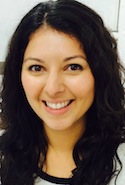
Getting people to buy anything is an art in and of itself. And healthcare isn’t nearly as appealing to consumers as shopping for a smart phone, despite its obvious necessity. I’ve found that getting people to buy healthcare largely depends on three things: simplicity and ease of buying, availability of tools and resources, and education.
Shopping for healthcare is viewed as difficult and perplexing, largely because it is not a tangible product. For many people, it’s synonymous with paperwork, bills, and bureaucracy. Strategies that pare down the process into a quick task and provide straightforward information drive the most enrollment.
Web interfaces designed for this new era of tech-savvy consumers—accustomed to gadgets at their fingertips, and Google and mobile apps instead of brokers—are also on the rise. Online search tools, which compact facts into easily digestible bites, help citizens feel they’re making more educated choices and smarter purchases. Consequently, websites like Covered California, which recommend options with the user’s financial status in mind, have seen more success in getting individuals to purchase plans. However, there is still room for improvement on the health tech platforms currently out there.
Information and education is the third critical component in mobilizing consumers. A large portion of California’s uninsured demographic consists of Latino families, and these households tend to be less plugged into technology. Grassroots outreach has been essential in their communities, since some families are misinformed and avoid healthcare applications out of misplaced fear of being deported. Neighborhoods with large non-Anglo populations respond well to the educational efforts of trusted community groups and local nonprofits.
A combination of simplifying the process, web apps, and individuals educating other individuals will ultimately translate into empowering more uninsured Californians to enroll for healthcare coverage.
Christine Carrillo is a patient advocate, and the CEO and co-founder of Impact Health (http://www.impacthealth.io), a new free online website designed to educate consumers and provide them with an easy, personalized way to shop for health insurance. She is also a veteran healthcare expert and CEO of Humanize Health, a consulting firm that has worked with providers such as Kaiser Permanente, Cigna Health, Anthem Blue Cross, and United Healthcare, among others, to design healthcare plans with the consumer in mind.

Covered California attributes its successful enrollment of 1.4 million people to three main factors: affordable health plans; robust marketing, outreach, and education; and effective eligibility and enrollment support. But they couldn’t have done it without trusted community organizations, clinics, and other local entities providing on-the-ground outreach, education, and enrollment support.
Many aspects of the Affordable Care Act and its implementation in California have needed and continue to need clarification. For many people, this was their first experience purchasing health coverage. Concepts such as co-pays, co-insurance, and deductibles are not intuitive. The racial and economic diversity of California’s population made it critical that messages and assistance be delivered by organizations that represent and mirror their respective communities. Further, these organizations needed to understand how best to connect with consumers with messaging and activities that are culturally and linguistically appropriate.
Throughout California, thousands of certified educators and enrollment counselors conducted one-on-one sessions with consumers, presented at community forums, and participated in enrollment events. They went to community gathering spots like churches, work source centers, farmers markets, educational institutions, and grocery stores. These educators and counselors spoke with people from all walks of life—parents, college students, the self-employed, the underemployed, and more. While they used Covered California materials, they also created their own such as power point presentations, factsheets, websites and consumer guides to further simplify complex concepts. They worked with Covered California itself to improve marketing strategies and to ensure that the consumer perspective informed all policy decisions.
This on-the-ground support provides a lifeline for many consumers to learn about, apply for, and enroll in health coverage.
Sonya Vasquez is the health coverage policy director at Community Health Councils, a nonprofit community-based health education, advocacy, and policy organization.



